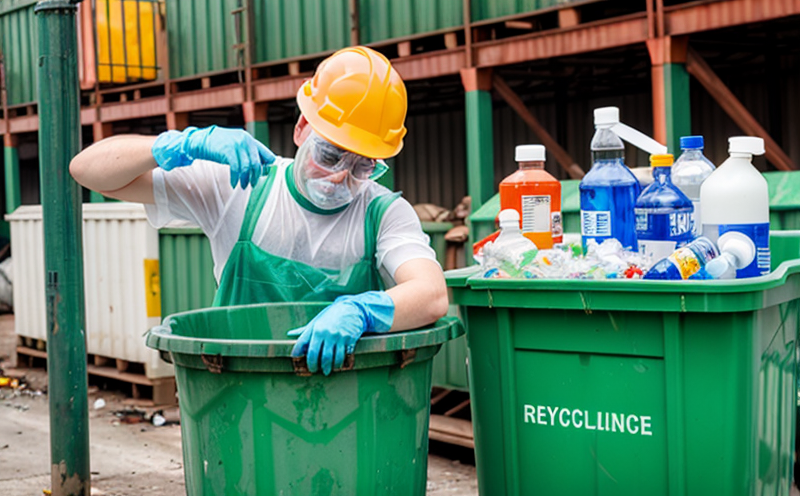ASTM E3050 Hazardous Waste Screening Testing
The ASTM E3050 Standard Practice for Hazardous Waste Screening, Monitoring and Characterization addresses the need to screen waste streams for hazardous materials before they are disposed of or recycled. This testing ensures compliance with regulatory standards set by organizations such as the Environmental Protection Agency (EPA) and helps facilities manage their waste responsibly.
The test is particularly important in industries dealing with industrial wastes, chemical manufacturing residuals, and other potentially harmful substances that could pose risks to human health and the environment. By employing ASTM E3050, laboratories can provide accurate assessments of hazardous waste, ensuring safe handling and disposal practices.
Our laboratory adheres strictly to this standard, using advanced analytical techniques to determine the presence and concentration levels of hazardous components in a given sample. This includes but is not limited to heavy metals like lead (Pb), mercury (Hg), cadmium (Cd), and arsenic (As), as well as volatile organic compounds (VOCs) such as benzene, toluene, ethylbenzene, and xylene.
Our team of experts prepares the specimens meticulously according to industry best practices before conducting rigorous analysis. We utilize state-of-the-art instrumentation like Inductively Coupled Plasma Mass Spectrometry (ICP-MS) for heavy metal detection, Gas Chromatography-Mass Spectrometry (GC-MS) for VOC identification, and other relevant equipment.
The ASTM E3050 methodology allows us to classify waste into different categories based on its hazardous characteristics. This classification helps in determining appropriate disposal methods and recycling opportunities. Our reports not only include the chemical composition of the waste but also provide insights into potential risks associated with each identified hazard.
By leveraging ASTM E3050, our clients benefit from comprehensive evaluations that contribute to sustainable resource management strategies. These tests are crucial for ensuring compliance with international standards like ISO 14001 and OSHA regulations, thereby protecting both personnel and the environment.
Why Choose This Test
Selecting ASTM E3050 Hazardous Waste Screening Testing ensures that you are adhering to stringent industry standards. Our laboratory offers several advantages over other testing methods:
- Comprehensive Evaluation: We perform thorough evaluations to identify all hazardous components present in the waste.
- Accurate Results: Using state-of-the-art equipment, we ensure precise and reliable results every time.
- Regulatory Compliance: Our tests align with international standards like ISO 14001 and OSHA regulations, helping you avoid costly penalties.
- Expert Team: Leveraging our experienced team of chemists ensures that your samples are handled with utmost care and accuracy.
By choosing ASTM E3050 Hazardous Waste Screening Testing from us, you gain peace of mind knowing that your waste management practices meet the highest standards. This not only benefits your organization but also contributes positively to environmental conservation efforts.
Competitive Advantage and Market Impact
- Regulatory Compliance: Ensures adherence to stringent regulatory requirements, avoiding penalties and fines.
- Cost Efficiency: By accurately identifying hazardous materials early on, you can avoid unnecessary expenses associated with improper disposal methods.
- Environmental Responsibility: Demonstrates commitment to sustainability, enhancing your company's reputation among stakeholders.
Use Cases and Application Examples
| Industry Sector | Sample Type | Hazardous Components Detected |
|---|---|---|
| Chemical Manufacturing | R&D Waste | Benzene, Toluene, Ethylbenzene, Xylene (BTEX) |
| Pharmaceuticals | Manufacturing Residuals | Cadmium, Lead, Mercury |
| Automotive | End-of-Life Vehicle Parts | Beryllium, Nickel |
| Sample Preparation Steps | Test Methodologies |
|---|---|
| Grinding and Homogenization of Solid Samples | ICP-MS for Metal Detection |
| Vaporization and Concentration Techniques for Liquids | GC-MS for VOC Analysis |





